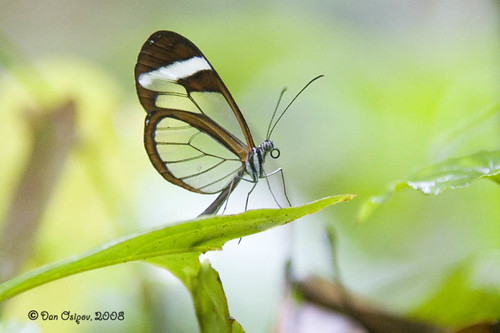I recently read an article in the May edition of Outdoor Photographer, that described the Rapid Assessment Visual Expedition (RAVE) project. The idea behind it is to document endangered areas of the world by sending in photographers, who would come back with material used for awareness campaigns. The area described in the article, as one where RAVE has done a lot of work is the El Triunfo Biosphere Reserve in southern Mexico. I recently spent some time in El Triunfo’s vicinity, and although it wasn’t nearly as much as I had hoped to spend there, I got a good idea of the incredible biodiversity present in the area.
True, most fragile ecosystems are disappearing faster than scientists are able to document them. But photographers are able to capture not only evidence of species presence, but frequently their behavior, something most scientists have to spend a lot of time observing. Not only that, photographer’s work can then be used for various awareness campaigns, as the photographs are frequently very emotionally touching (case in point: have you seen the WWF commercials recently?)
I would go further. In the modern internet age, these photographs can be organized in online databases. This will give researchers a snapshot in time of each particular area, and how it changes, year after year. With the rate of global warming that we’re facing, this change is more than visible.
So, what is the key to making this work? One word: metadata. And not just any metadata, but properly defined metadata, describing the image correctly: date taken, location, altitude, weather conditions, species photographed, and anything else. In an ideal world, all photos would be tagged this way, and a simple search would return all photos of the specific subject. Unfortunately, at this time it isn’t the case (a search for “bird” on flickr returns 2,560,270 results, most unspecific). The reason, is that photographers are not educated enough to identify every subject they photograph. I know I can’t. This is where collaboration between scientists and photographers comes in. That is the goal of new wiki-like projects, like Encyclopedia of Life.
I am doing my part, trying to tag all my photos, identifying all forms of life in it. But it’s hard – there are millions of species identified, and even more that aren’t. And it takes a lot of experience to be able to identify each group. Furthermore, some photos picture the subject at an angle, that makes it impossible to identify precisely.
I think there will be a growth of various tools for collaboration between various groups for the benefit of the environment. There will be a collaborative content management system that controls the photos, videos, and associated metadata, as well as related research. Hopefully, this tool will arrive before most of the species are extinct.
And now, if you’ll excuse me, I’ve got a rain forest to save…
